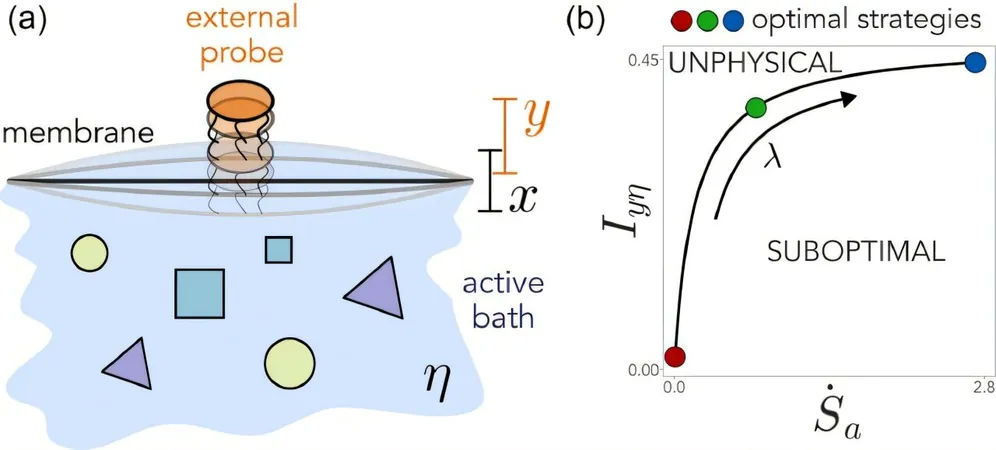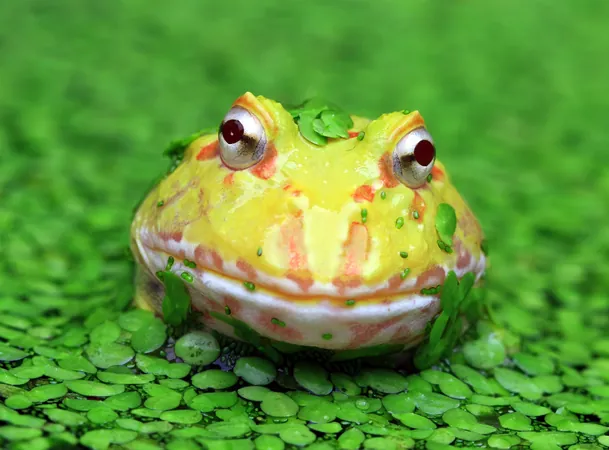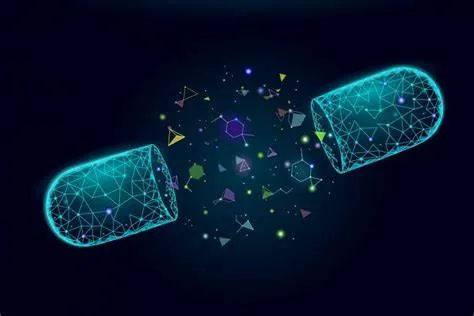
Revolutionary Research on Biological Data Gathering: How Cells Decode Their Environment
2024-10-31
Author: Rajesh
In the ever-changing landscape of life, organisms face the daunting task of rapidly detecting and processing sensory information to thrive. However, the sensory input they encounter is often fragmented and fleeting, presenting a challenge for survival.
A groundbreaking study by researchers from École Polytechnique Fédérale de Lausanne and the Max Planck Institute for the Physics of Complex Systems is paving the way for novel understanding in this field. Published in the esteemed journal Physical Review Letters, their research delves into how biological systems, like our very own red blood cells, transform limited information into actionable intelligence while utilizing minimal energy.
Giorgio Nicoletti, a co-author of the paper, highlighted the predicament organisms encounter: “Living organisms need to sense their environment to survive, yet they cannot always directly ‘listen’ to external signals. They depend on what we term 'transduction mechanisms' to interpret and relay these signals into their internal processes.”
Aiming to decipher the efficiency of these mechanisms, the researchers developed a new theoretical framework specifically applicable to red blood cells. Integral to this study was the cell membrane, regarded as a semi-permeable barrier essential for the cell's survival and function. Nicoletti expressed, “In our framework, the membrane's role is to relay information between the cell's inner workings and the external environment. Our goal was to determine the optimal strategy for this transduction that maximizes information while minimizing energy waste.”
The study's primary objective was to elucidate how biological systems can exploit available information for crucial decision-making, even under energy constraints—a fundamental aspect of biological life. The researchers drew upon various models that portray the dynamics between the red blood cell's cytoskeleton, membrane, and surrounding environment. By leveraging concepts from information theory and stochastic thermodynamics, they painted a clearer picture of how these components interrelate.
Further understanding was gleaned from previous experimental data focusing on the flickering behavior of red blood cells—tiny spontaneous movements of their membranes that reveal critical insights into their physiological state. Busiello noted, “Through this lens, we identified the essential mechanisms that enable biological systems to capture information from variables that are not directly observable in an efficient manner.”
The implications of this research extend far beyond red blood cells. The framework introduced by Nicoletti and Busiello holds promise for enhancing our grasp of information-harvesting processes across various biological organisms. Additionally, it opens the door for the design of advanced bio-inspired devices that mimic these optimal decoding strategies in practical applications.
As the team looks toward the future, Busiello emphasizes the importance of understanding these complex systems: “Living systems utilize a web of interconnected processes to thrive. Take bees for instance, they communicate through intricate combinations of chemical signals and movement, continually dissipating energy. Studying these fascinating mechanisms could lead us to unlock the secrets of how organisms harness information from their environment, even amid noise and disruptions.”
Stay tuned as this promising research unfolds, potentially reshaping our comprehension of biology and its applications in technology and beyond!




 Brasil (PT)
Brasil (PT)
 Canada (EN)
Canada (EN)
 Chile (ES)
Chile (ES)
 España (ES)
España (ES)
 France (FR)
France (FR)
 Hong Kong (EN)
Hong Kong (EN)
 Italia (IT)
Italia (IT)
 日本 (JA)
日本 (JA)
 Magyarország (HU)
Magyarország (HU)
 Norge (NO)
Norge (NO)
 Polska (PL)
Polska (PL)
 Schweiz (DE)
Schweiz (DE)
 Singapore (EN)
Singapore (EN)
 Sverige (SV)
Sverige (SV)
 Suomi (FI)
Suomi (FI)
 Türkiye (TR)
Türkiye (TR)